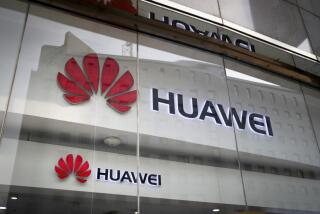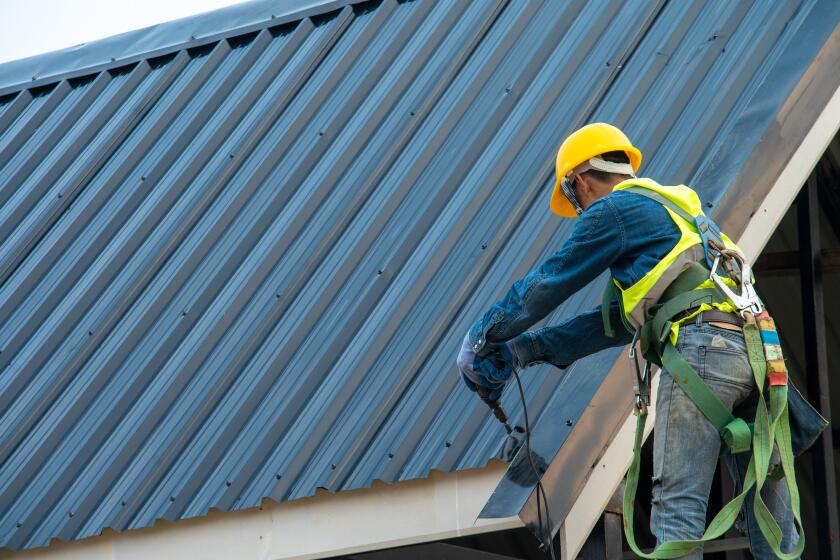Chrysler Will Triple Subcompact Imports, Limit U.S. Expansion
- Share via
NEW YORK — Following through on an earlier threat to shift small-car production overseas if quotas on Japanese imports were ended, Chrysler Corp. announced plans here Thursday both to triple its imports of subcompacts from Japan and scale back its expansion plans in the United States.
Saying that Chrysler is “competing under a new set of rules” now that the Reagan Administration has announced that it will not urge Japan to extend import restraints for a fifth year when they expire March 31, Chrysler Chairman Lee A. Iacocca said the company has notified its Japanese affiliate, Mitsubishi Motors Corp., that it wants to buy an additional 200,000 small cars on top of the 87,500 that it already imports each year from Japan.
In a press briefing here following a meeting of Chrysler’s board, Iacocca said Mitsubishi will be able to fill Chrysler’s expanded order by 1986 or 1987.
Warning From Chrysler
Just before President Reagan announced his decision on import restraints last week, Chrysler warned that it would expand its import arrangement with Mitsubishi if quotas ended.
Meanwhile, Chrysler also said that it is scaling back its plans to develop an all new, U.S.-built subcompact car, code-named the P-car. Chrysler had originally designed the P-car as a small import fighter and had planned to build it in its Belvidere, Ill., small-car plant.
But as part of a new strategy to concentrate on building larger, more expensive cars in North America and smaller, cheaper cars in Asia, Chrysler is converting the P-car into a more expensive compact model to be introduced late in the 1986 model year.
Chrysler also has reduced its P-car production volume estimates from 300,000 to 150,000 units a year. As a result, Chrysler has dropped its plans to build the P-car in Belvidere and, instead, will only need to use part of its Sterling Heights, Mich., plant, where it also builds other compact models.
Iacocca said Chrysler’s Belvidere plant, which employs 4,000 workers, will keep building Chrysler’s Dodge Omni and Plymouth Horizon subcompacts for another two years. If sales of those models fall off as a result of competition from Chrysler’s new imports, their production will be ended in 1987. Iacocca added that the company has no plans to produce any other models in Belvidere, but he promised he would “move heaven and earth” to keep the plant running in the late 1980s.
Iacocca also said Chrysler is no longer planning to expand its production of mini-vans in the United States and so has dropped its $600,000 option to buy a Western Electric plant in Indianapolis. It also is no longer interested in buying a closed Caterpillar Tractor Co. plant in Peoria, Ill. Chrysler now builds its popular mini-vans only in Canada and had been planning to add a second mini-van plant to keep up with consumer demand.
Iacocca said Chrysler would have increased its spending for its five-year new-product program from $10.5 billion to $12.5 billion if it had gone through with its expansion plans, but will now keep its level of investment at $10.5 billion.
Chrysler said it will now concentrate much of its $2.8 billion in spending for new products this year on mid-size and large-car development rather than on new subcompacts.
To complement its new emphasis on the Far East as its source for small cars, Iacocca also said Chrysler is establishing a new international business unit that will concentrate on strengthening Chrysler’s ties to foreign parts suppliers.
Iacocca also said he and other Chysler executives will travel to Japan and Korea in the next month to revise Chrysler’s negotiations with Mitsubishi on a small-car joint venture in the United States and are also looking to the possibility of building small cars in Korea.
Talks Still Preliminary
Iacocca said he isn’t sure whether Mitsubishi is still interested in a joint venture in this country now that import quotas have been lifted. He also said Chrysler’s talks with two of Korea’s big industrial groups, Sam Sung and Hyundai, are still in the preliminary stages.
“We are not far enough along in negotiations to say whether we will build a car with Sam Sung or Hyundai,” Iacocca said. “That is something for 1990 and beyond.”
Iacocca said Chrysler’s strategic shift will not have an immediate effect on its U.S. employment but could eventually cost American jobs when Chrysler’s imports from Mitsubishi increase. But he insisted that Chrysler is not abandoning its American workers.
“We’ve brought back 25,000 workers in the last two years, and my goal is to keep them all working,” Iacocca pledged Thursday.
“Our immediate job is to keep running the plant capacity we have now and not to think about expansion.”
Still, at a board meeting Thursday, Owen Bieber, the United Auto Workers president who is also a Chrysler director, voiced opposition to the company’s plan, Iacocca acknowledged. But the board did not vote on whether to approve the new strategy, a Chrysler spokesman said.
Iacocca said Chrysler’s new strategy had been developed before the Reagan Administration decided to allow auto quotas to lapse, and had been held in reserve as the company’s “Plan B” just in case restraints were ended. Under Iacocca, Chrysler had lobbied hard for an extension of quotas and had expected to continue to expand its production in North America if the restraints had been continued.
“I’m proud we fought on quotas, but we lost and we’ve got to adapt,” Iacocca said. “There has been no movement to improve the yen-dollar exchange problem, and the quotas are ending. So the American market is wide open.
“We have to follow General Motors (which plans to import up to 300,000 small Japanese cars a year when quotas expire) and go to the Far East, and fast,” Iacocca said.
More to Read
Inside the business of entertainment
The Wide Shot brings you news, analysis and insights on everything from streaming wars to production — and what it all means for the future.
You may occasionally receive promotional content from the Los Angeles Times.










